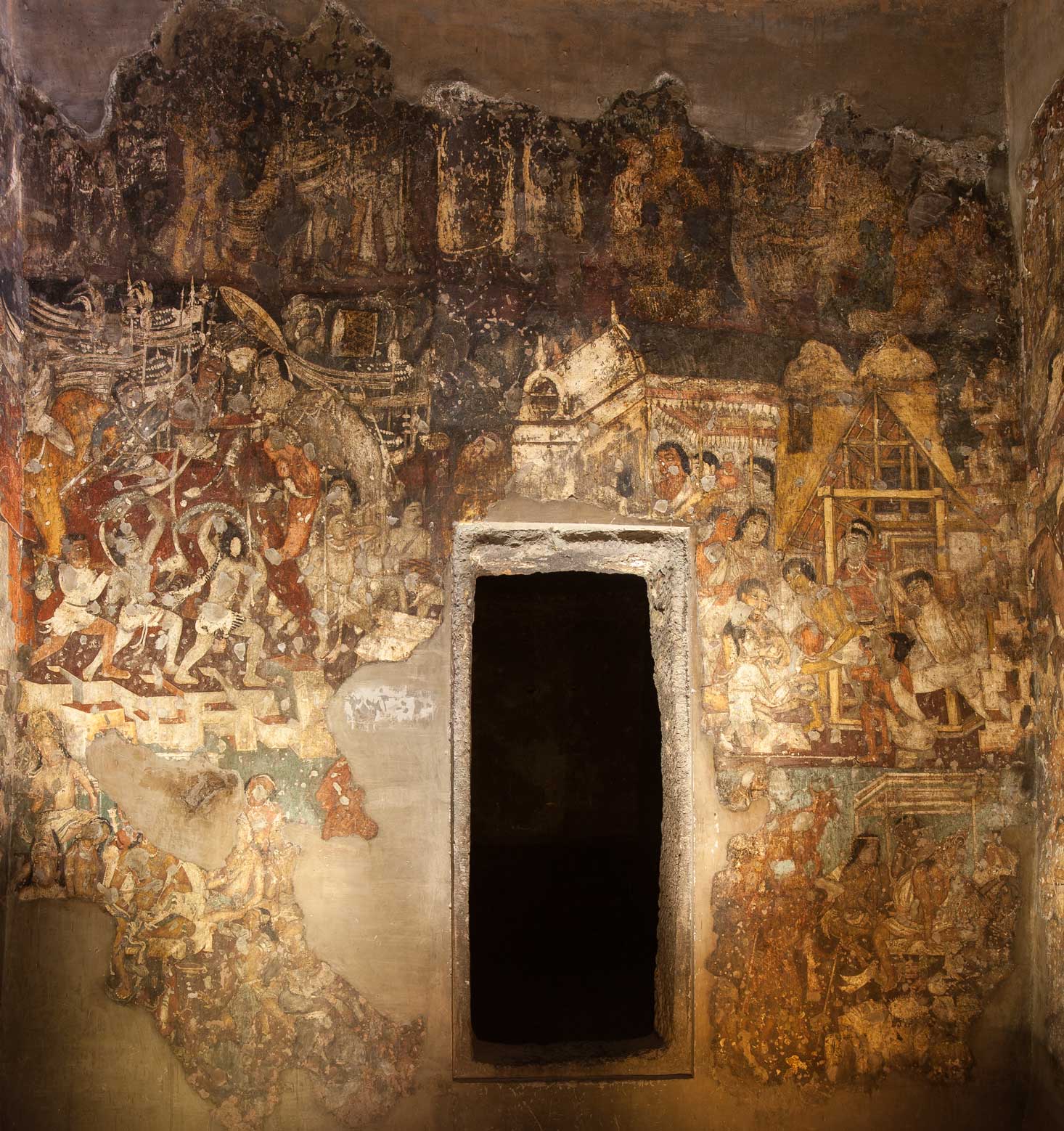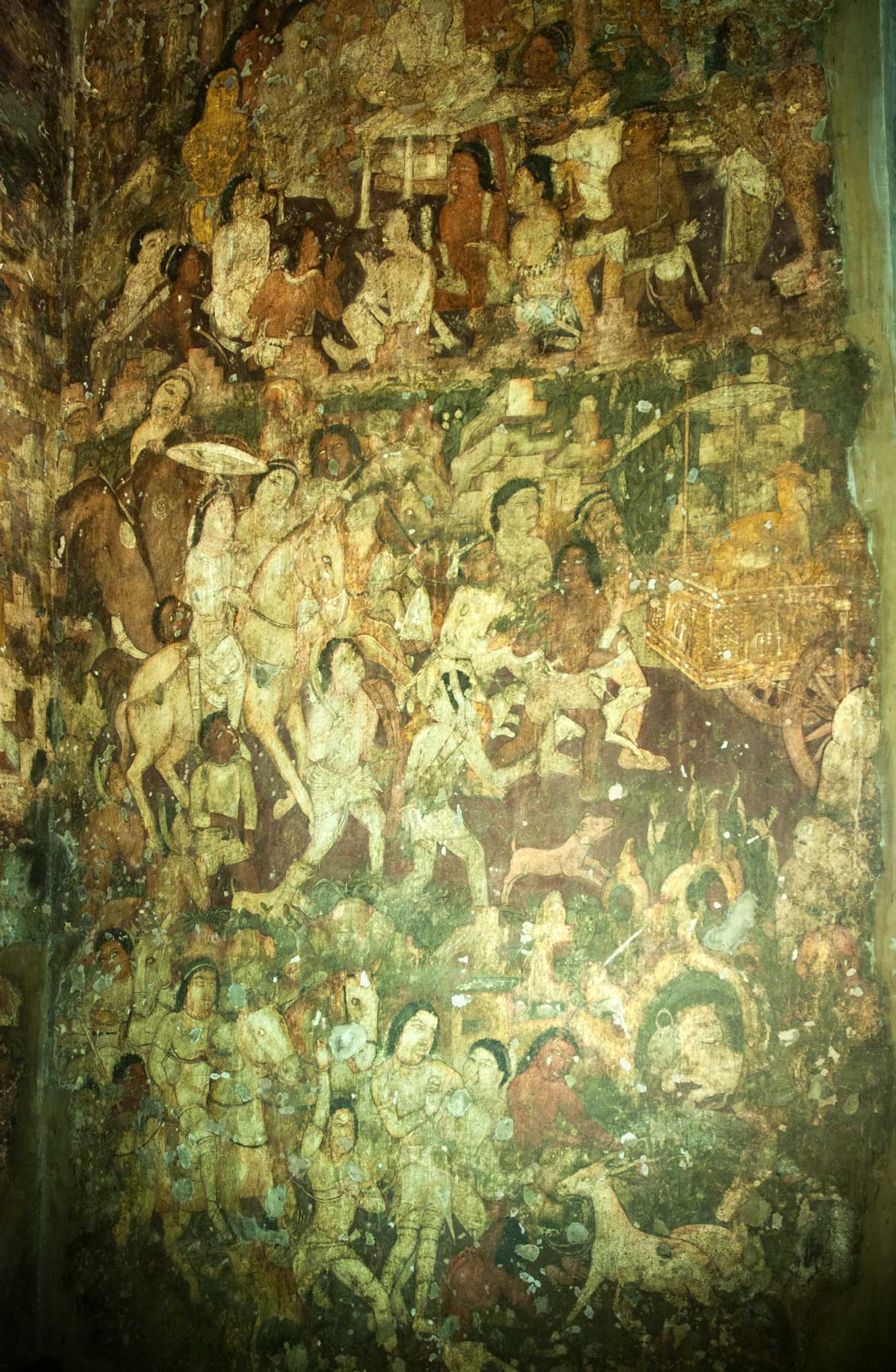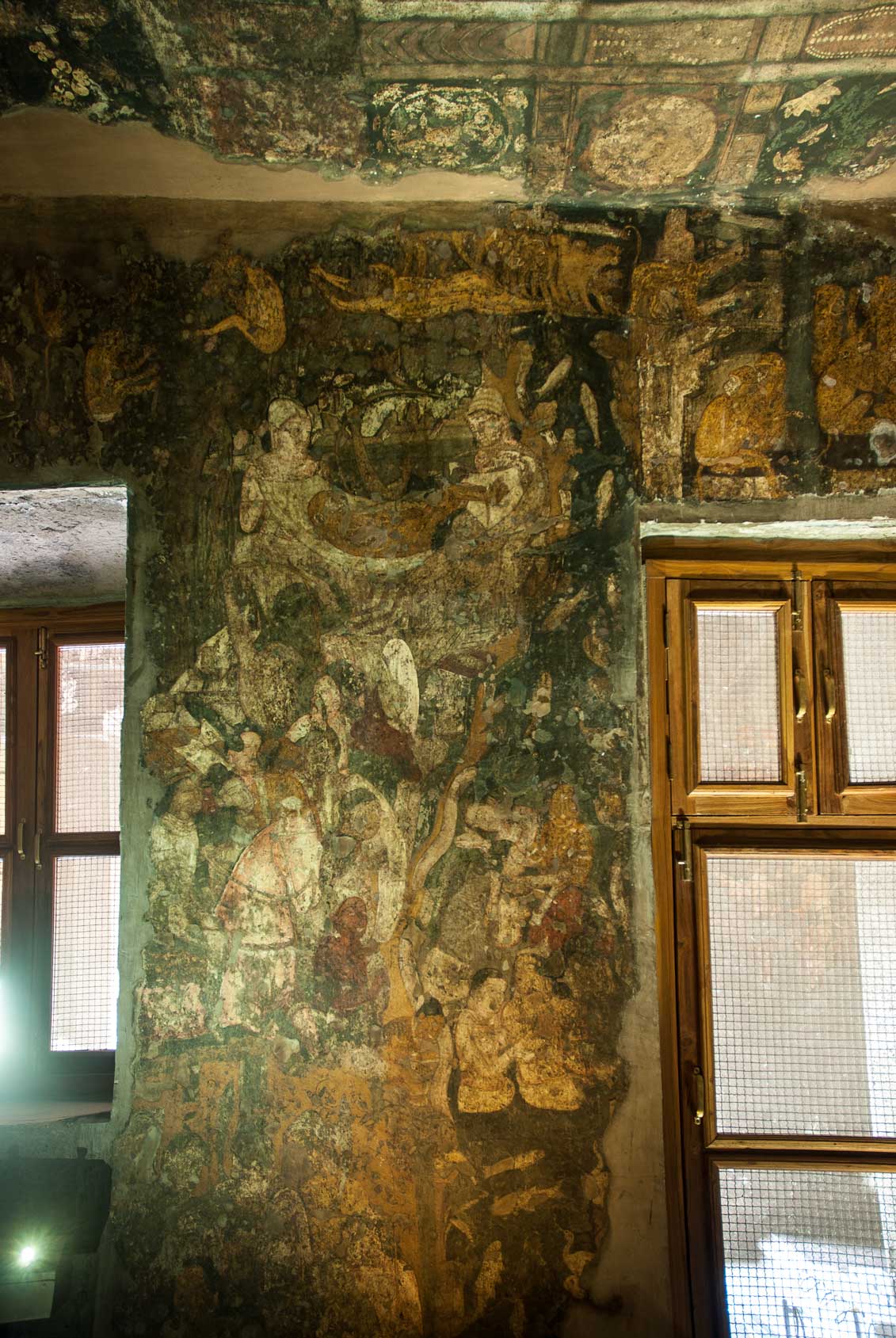Tag: Asian art and archaeology
-

#78. Indrabrāhmaṇa
Cave No. 17 Identification: Schlingloff 2013.— Indra was very proud of his stature and beauty and was curious to know if the Buddha could surpass him. He attempted to measure the Buddha’s stature but was not successful; despite climbing high on a pedestal he could not see the Buddha’s head. The Buddha then explained that…
-

#49. Śibi
Cave No. 17 Identification: Burgess (1879, p. 75 f.). It is an episode from the life of the Buddha. King Śibi was renowned for extreme generosity. He provided for all needy persons even if they were from faraway places, having built donation halls in his palace. One day, No. 78. Upper part: the legend of…
-

-
#23. Ṛkṣa
Cave No. 17 Identification: episode 2 by Lalou (1925, p. 335 f.); other episodes Schlingloff 2013 (?)—A poor woodcutter was caught in a storm while on his way to work. Shivering with cold, he took refuge in a mountain cave, where he came across a bear. He was terrified, but was soothed by the bear,…
-

#19. Mṛga
Cave No. 17 Identification: Foucher (1921, narrative no. 9).— There lived a king of the mṛgas (antelopes) with his herd in a Himalayan forest. One day, in a battle with the king of that country, his herd and a few neighbouring herds were encircled and could not escape. In order to prevent a mass slaughter,…
-

#28. Ṣaḍdanta
Cave No. 17 Identification: Foucher (1911, p. 234).— There lived an elephant called Ṣaḍdanta (Six-tusked), the king of a herd, in the Vindhya ranges. One day, a beautiful lotus fell from a flying nymph at the elephant’s feet, which he offered to his second wife, who appeared before him first. The first wife flew into…
-

#31. Mahākapi
Cave No. 17 Identification: Foucher (1921, narrative no. 5).— There lived a Great Monkey (‘Mahākapi’) with his herd on a fig tree, beside a river in the Himalayas. Once, a ripe fig from the tree fell into the river, where a king with his female attendants was bathing downstream. The king ate the fig and…
-

#26. Hastin
Cave No. 16 Identification: Foucher (1921, narrative no. 22).— Once a group of travellers were lost in a forest, tired and exhausted to death. They met an elephant (hastin) and pleaded with him for help. The elephant, knowing that they would not find food in the oasis, directed them to a rock-bed, where they could…
-

#35. Bodhi
Cave No. 17 Identification: Schlingloff (1986, p. 305 f.).— A brahman, named Bodhi, and his beautiful wife, lived in the seclusion of a forest, leading an ascetic life. Once, the king of the land came across them and started lusting after the brahman’s wife. After assurances that the brahman would not curse him, the king…
-

#48. Sarvadada
Cave No. 17 Identification: Schlingloff (1986, p. 305–308).— A king, titled Sarvadada (Giving Everything) for his generosity, once went to his audience hall to address his subjects’ welfare. Just then a scared pigeon flew in pleading for life. The king promised to grant him security. The pigeon had escaped a bird-catcher, who was actually Lord…
